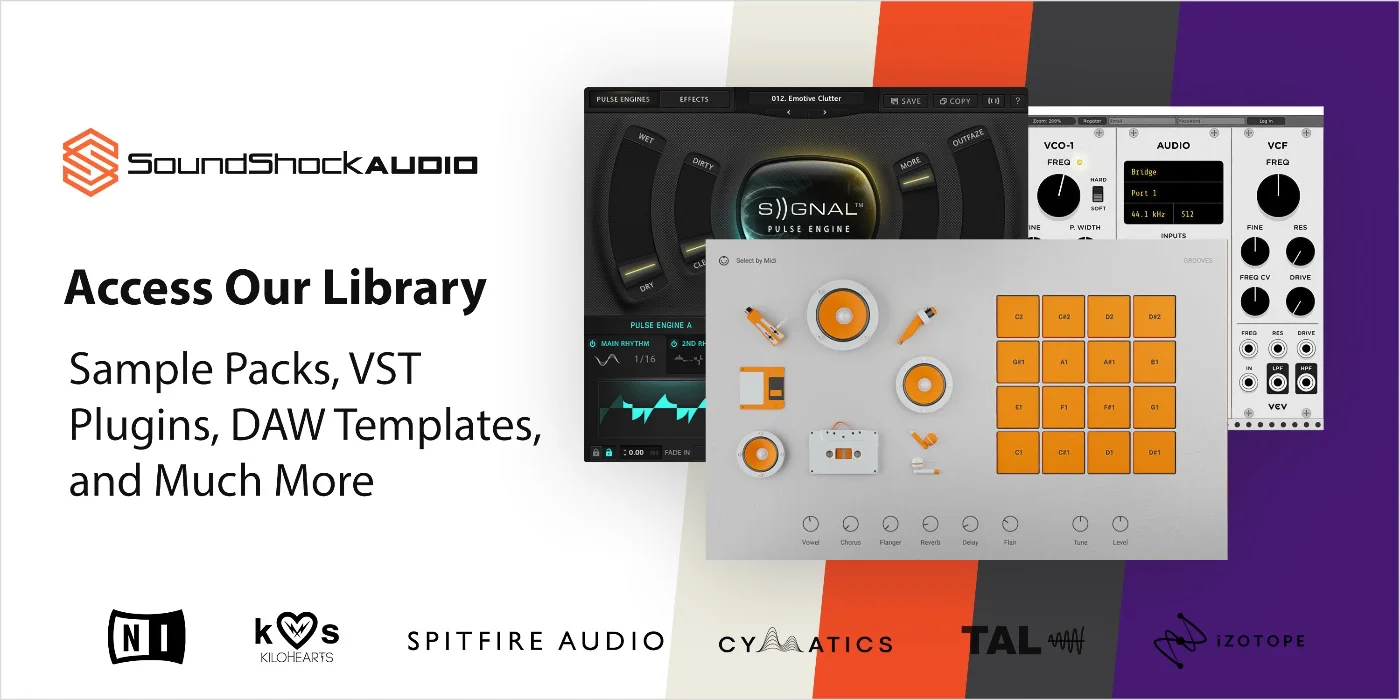As an audio engineer or music producer, you know the importance of creating a balanced mix. Pads are one of the most important elements to get right – they provide texture and atmosphere that can really bring your track to life! But how do you go about EQing them correctly? This guide will give beginners all the information they need on how to properly EQ pads for maximum impact.
No matter if it’s synth pads, strings, horns, or any other type of pad sound – getting the EQ just right is essential. It can be tricky to master at first, but with this comprehensive guide we’ll show you exactly how to approach each step in order to create beautiful sounding pads that fit perfectly within your mix.
From understanding what frequencies to target when boosting and cutting, through to best practices for setting up sidechain compression – by the end of this article you’ll have all the tools necessary for crafting professional-level mixes with ease. Let’s dive into ‘How To EQ Pads: A Comprehensive Guide For Beginners’!
Definition
EQ-ing pads is like driving a car: it’s intimidating at first but with practice, you can become an expert. So what exactly are EQs and how do they work? An EQ is short for equalizer – these are tools used to adjust the frequency of sound. It allows engineers to boost or reduce certain frequencies in order to create more balanced audio output. Pads refer to any instruments that produce sound waves – this includes vocals, guitars, drums, etc. Together, eq pads allow producers to fine-tune their mix by manipulating various frequencies within each instrument group.
To better understand this process, let’s talk about some key terms related to eq and audio engineering. The frequency spectrum is the range of audible sounds emitted from a given source; as well as other characteristics such as amplitude/volume, attack rate/speed and decay time/sustain. With eq pads, engineers can manipulate each of these variables individually in order to achieve their desired sonic goal. From here we’ll explore the benefits of using eq pads when mixing music.
Benefits Of Eq Pads
Now that we’ve defined what EQ pads are and how they work, let’s take a look at the benefits of using them when creating audio. Equalizing pads can provide subtle control over sound levels without drastically changing the overall soundscape. This makes them appealing to producers who want to achieve specific sonic results in their mixes. Additionally, pad equalizers give users more flexibility with shaping individual sounds within a mix, allowing for greater creativity.
Using an eq pad is also great for tweaking pre-recorded samples or tracks. With a good understanding of frequencies and dynamics, you can use pad equalization to shape your sound until it fits perfectly into the mix – something which would be impossible with just traditional mixing techniques. Moreover, an equalizer pad allows for very precise adjustment of frequency response curves across multiple channels simultaneously – perfect for sculpting complex sounds into brilliant audio pieces. On top of all this, using an eq pad helps reduce unwanted noise in recordings while preserving essential elements like clarity and definition.
From producing professional-grade music to recording clear yet powerful vocals, there are plenty of advantages that come from utilizing eq pads correctly – particularly if you’re looking to create a refined finished product. Choosing the right eq pad will ensure you get the most out of your soundscapes while maximizing creative potentials along the way.
How To Choose The Right Pad
Choosing the right eq pad for your project requires a keen eye and an ear for detail. Think of it like searching for that perfect piece of furniture in a crowded store. You need to sift through all the options, consider their characteristics, features, and how they will fit into your space. When selecting your eq pad, look at the type of music you are creating, as well as its tone and texture. This is important when deciding which pads best suit your project’s needs.
The process of choosing the right pads involves evaluating various types available on the market today. Some popular ones include dynamic pads, condenser pads, ribbon mics, etc., each offering unique characteristics such as frequency range or sound isolation capabilities. Consider features offered by each type before settling on one particular option; think about how much gain you’ll need in order to properly capture whatever instrument or vocal track you’re recording. Ultimately, this decision comes down to what works best for your individual situation and budget.
Take time to experiment with different types of eq pads during setup stage. Listen closely to see if there is any extra noise coming from them or whether they are adding unwanted coloration or tonal changes to your recordings – these can be telltale signs that you may need something more suitable for the job ahead! With patience and some trial-and-error testing under your belt, you’ll eventually find just the right pad that fits both your sonic style and budget constraints.
Setting Up The Equipment
Before you can begin to eq pads, you need the right equipment. This includes selecting microphones, setting up signal routing, and positioning mics for optimal sound capture.
Choosing the right mic will depend on what kind of sound you’re looking for: dynamic or condenser? You’ll also want to consider how many channels your setup needs – one microphone per instrument or a stereo pair arrangement? When it comes to signal routing, decide which type of cable connection is best. Lastly, proper microphone placement is essential; choosing an angle that captures all the frequencies without overloading any one area. All these considerations are important when preparing for eq pad processing.
Techniques For Eq Pads Processing
Now that you have your equipment setup, it’s time to dive into the world of EQ pad processing. Equalization is one of the most important sound manipulation techniques used in music production and can be a crucial part of crafting great sounding pads. There are many different equalization methods available for use and understanding how each works will help you get the desired results with your own unique sounds.
Frequency control is key when adjusting EQ on pads and this is often done by boosting or cutting certain frequencies in order to either bring out more clarity or add warmth to a track. Experimenting with various settings and parameters can open up new possibilities for sound design, allowing you to create complex tones that stand out from other tracks. To achieve the best possible results, try using multiple layers of equalizers while experimenting with boosts, cuts, shelving filters, parametric controls, and frequency sweeps. With careful consideration and understanding of these various tools at your disposal, you’ll be able to craft interesting sonic landscapes that capture attention.
EQ adjustments require patience and practice but once mastered they become an essential tool in any producer’s arsenal. By utilizing effective eq techniques along with proper sound manipulation skills, creating polished sounds becomes much easier – even if it takes some trial-and-error before finding success. Learning tips for making adjustments such as subtlety reducing high-end frequencies or adding low end coloration can also go a long way towards getting the perfect result for your production needs.
Tips For Making Adjustments
Adjusting EQ pads is like balancing a tightrope, where the goal is to make sure everything stays in perfect harmony. By making subtle and precise adjustments to each pad’s frequency range and gain level, you can create the perfect soundscape for your music. Here are some tips that will help get you started:
Start with low-level adjustments. Before increasing any parameters, lower them slightly first so that they don’t exceed their recommended settings. This will give you more control when it comes time to increase levels later on.
Always use headphones before applying changes to ensure proper EQ balance throughout all frequencies of the mix.
Take breaks between adjusting different pads – this gives your ears time to adjust and allows you to better hear what types of changes have been made since the last adjustment was made.
Experiment with different combinations of frequencies and gain levels until you find the one that works best for your particular track or genre of music.
With these tips in mind, it should be easier for anyone new to eq processing to begin adjusting their own tracks successfully. Having an understanding of how each parameter affects the overall sound will put producers ahead of the game as far as getting great sounding mixes every time!
Troubleshooting Common Issues
Now that you have the basics of EQ settings down, it’s time to troubleshoot any common issues. The table below will help guide you through common problems and their solutions:
| Issue | Solution |
|---|---|
| Low volume levels | Increase volume control on your sound device or software |
| Too much bass or treble masking vocals | Reduce frequency ranges in those areas with a high-pass filter/low shelf (respectively) |
| Audio sounds too harsh or distorted | Reduce gain on certain frequencies by using a parametric equalizer |
When dealing with audio quality issues, remember to take your time and make gradual changes. Focus on making small adjustments rather than drastic ones so that you can achieve the desired results without overdoing it. If an issue persists, try experimenting different combinations of EQ settings until you find one that works for your mix!
Frequently Asked Questions
What Are The Best Eq Pads For A Beginner?
Are you a beginner looking to get into the world of eq pads? It can be daunting at first, but with the right information and understanding of the different types of eq pads available, it’s easier than ever to find an eq pad that fits your needs. This article will discuss some of the best eq pads for beginners, as well as how to compare between them, what processes are involved in getting started with eq pads, and what settings should be used when beginning.
Let’s take a look at some popular options for beginner-friendly eq pads. Whether you’re looking for something more powerful or simple and straightforward; there is a wide range of choices out there depending on your level of experience. If you don’t know exactly where to start, then opt for something like Behringer ULTRAGRAPH PRO EQ which comes preloaded with presets by experienced sound engineers – this makes it easy for those who are just starting out. On the other hand if you want something more customizable and versatile then consider Steinberg Cubase Pro – its features allows users to make deeper adjustments without having too much technical knowledge beforehand.
When comparing between different models, always check their specs such as number of bands available, frequency response rate and noise levels among others. Additionally read up on reviews from fellow producers who have tried various brands – they might provide valuable insight into particular models that could potentially suit your needs better. Lastly it helps to assess each model based on its price point versus quality ratio so you don’t overspend unnecessarily on features that may not even be relevant in the long run.
Once you’ve settled on an ideal option for yourself, next step would involve familiarizing yourself with the process behind setting up these machines properly. There are several aspects that need to be looked into including input/output connections, gain staging techniques as well as signal routing procedures; all of which can quickly become overwhelming if left unchecked! Fortunately many manufacturers provide detailed manuals online with helpful tips and guidelines about setup processes – take advantage of these resources whenever possible! Finally once everything is connected correctly it’s time to adjust the individual band settings according to personal preference or specific mix requirements (eg: reducing high frequency sibilance etc). With practice anyone can learn how tweak their own knobs effectively within no time!
What Type Of Music Is Best Suited For Eq Pad Processing?
When it comes to music production, EQ pads are a great tool for sound design and making sure the frequency range of your track is balanced. But what type of music is best suited for eq pad processing? This ultimately depends on the genre of music you’re producing, as well as how you use the pads in your sound mixing.
For example, if you’re working with electronic dance music (EDM), then using EQ pads can be incredibly helpful when it comes to carving out space within a mix. You can filter certain frequencies out or increase others depending on exactly what kind of tone and atmosphere you want your song to have. On the other hand, if you’re doing something more ambient or chill-out focused, then having access to EQ pads can allow you to tweak levels in such a way that puts all elements together in perfect harmony.
No matter which style of music production you specialize in, understanding how EQ pads work and knowing when they should be used will help take your sound design to new heights! With some creative experimentation, there’s no limit to what types of sounds and textures can be achieved through effective use of these tools.
Is There A Specific Order To Make Adjustments When Eqing Pads?
The process of eqing pads can be an intimidating one for the uninitiated; however, understanding a few key tips and techniques can help any beginner get off to a great start. Is there a specific order to make adjustments when eqing pads? The answer is yes! By following these simple steps, you’ll be able to refine your sound more precisely than ever before.
When it comes to pad eqing, having a plan in place will result in better results with less hassle. Here’s four essential tips that every producer should keep in mind:
- Start by adjusting the low frequencies first
- Move on to mid-frequencies and adjust them according to taste
- Next, focus on high frequency adjustment
- Finally, do some overall level balancing if necessary
By taking these steps in this order you can ensure each part of the mix has been appropriately processed without overloading yourself or your project with too much information at once. Furthermore, paying attention to small details such as subtle harmonic changes can go a long way towards dialing in the perfect soundscape for your track – something which would otherwise be difficult or tedious if attempted haphazardly.
Eqing pads isn’t just about pushing buttons until things sound good either; it’s about creating a cohesive blend of sounds that work together harmoniously within the context of your song or composition. This means being mindful of how various elements interact with one another, as well as experimenting with different settings until you find what works best for your particular piece of music. With practice and patience you’ll soon become adept at shaping tracks from scratch into something truly special!
What Is The Difference Between A Compressor And An Eq Pad?
Compressors and EQ pads are two of the most important tools in a producer’s toolkit. While they both affect sound dynamics, their functions are quite different. Compressors reduce dynamic range by attenuating loud sounds and amplifying quiet ones while EQ adjusts frequencies to change tonal characteristics.
The main difference between an EQ pad and compressor is that compressors work on the entire frequency spectrum at once, whereas EQ operates within designated frequency bands. With an EQ pad, a user can adjust specific frequency ranges – such as bass or treble – individually to fine-tune the desired sound. This allows for more precise control over the timbre of audio than with a compressor. Additionally, compression changes volume levels dynamically throughout the track; however, when using an EQ pad adjustments remain static unless manually changed again.
Having knowledge of how these effects interact with one another can be essential for achieving certain production goals. Understanding each effect’s strengths and application will ultimately help producers make informed decisions regarding which techniques to use when creating music.
What Are The Differences Between Hardware And Software Eq Pads?
When it comes to EQ pads, the differences between hardware and software are like night and day. Hardware EQ pads have a physical presence that can’t be duplicated by software – they’re tangible pieces of equipment with knobs, dials, and buttons that allow you to manipulate sound in real time. Software EQ pads, on the other hand, are virtual simulations of those same controls but exist only within the confines of your computer.
The main difference between hardware and software eq pads is the way they interact with sound. With hardware EQ pads, you control levels via manual adjustments – using knobs and sliders to adjust frequencies as needed. Software eqs also allow for frequency manipulation but this process must take place inside a digital environment; instead of manually adjusting knobs or switches, you’ll use a mouse or keyboard to make desired changes. Additionally, most software-based eqs come equipped with presets which make them more user friendly than their hardware counterparts.
Whether you opt for a hardware or software based solution depends largely on your individual preferences. If you’re looking for an easy-to-use interface with lots of preset options then go for software EQs; if you want total control over every aspect of your sound then consider investing in some high quality hardware eqs. Whichever route you choose will depend on what kind of audio engineer or music producer experience you’re trying to create!
Conclusion
As a music producer or audio engineer, knowing how to EQ pads is an important skill to have. It can be intimidating for beginners as there are many different types of EQs and settings that need to be adjusted. However, with practice and patience, it’s certainly possible to become proficient in this area.
One interesting statistic worth noting is that the average person spends twice as much time mixing than they do mastering when creating music. This means that having good knowledge about EQing pads and other aspects of mixing will make all the difference between a high-quality track and one that sounds amateurish.
In conclusion, learning how to use an EQ pad effectively requires some trial and error but it can really help improve your mixes if you take the time to learn the basics. As long as you understand the differences between hardware and software versions, what type of music each setting works best with, and which order adjustments should be made in, then you’ll be well on your way to becoming a pro at using these powerful tools!
Access over 4,000+ Free Music Production Tools

Subscribe to SoundShockAudio and access our extensive library of free music production tools, including Music Production Apps, Sample Packs, and more. Take advantage of our comprehensive tools to create music that truly resonates with your audience.
Need more help when it comes to EQing? Check out the article, how to eq reverb in logic pro.
Also check out this other article how to eq reverb fl studio, for more EQing tips.




